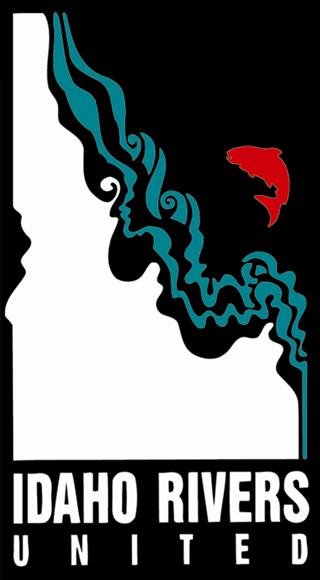Special Feature Story: TAMÁALWIT IS THE LAW
Chinook salmon populations are dwindling in the Snake River Basin. Photo credit: Ryan H.
The land governs us. The water that runs in the rivers is the same water that runs in us. We breathe the same air that the trees breathe. The soil that holds the trees was nourished by salmon. The land sustains us, and we are beholden to it.
The Nez Perce call it tamáalwit – it is the law that binds us to the land and makes us accountable. Tamáalwit is the sun rising in the east. It is the snow falling in winter and the water running to the ocean. Tamáalwit is the obligation we have to the salmon. For eons, millions of salmon spawned in the Snake River basin in central Idaho. Historically, of the 16 million salmon that returned annually to the Columbia River drainage, more than half spawned in the Snake River. Even now, the Snake basin contains nearly half of all high-elevation, cold-water habitat for Pacific salmon and steelhead in the lower 48. There are 30,000 miles of habitat in the intact wild country that comprises the Snake River basin above four dams constructed on the lower Snake River between 1955 and 1975.
The Snake Basin is vast and intact and its legacy as the salmon factory for the west coast is not a lost cause. The habitat is still there, and it is colder and cleaner than what is left on lower elevation coastal rivers. The limiting factor for wild Snake River salmon and steelhead is the lower four Snake River dams in eastern Washington. These dams, authorized by Congress for barging grain from Lewiston, Idaho, have destroyed wild salmon and steelhead runs to the Snake River and left them hovering just above the extinction threshold.
Since the construction of the dams, the quasi-governmental agency responsible for managing them – Bonneville Power Administration – has spent $25 billion in rate-payer money on congressionally mandated mitigation, including hatchery fish, which die at an especially high rate in the salmon-killing hydro system. Even with all the money spent on mitigation, BPA has never managed to achieve a simple metric.
The science tells us that to maintain salmon populations, for every 100 smolt born in the headwaters, at least two must survive the trip to the ocean and back. We call this smolt to adult ratios, or SAR. If we want wild salmon to persist, we need at least two-percent SAR. For salmon to recover, we need three to four percent SAR. We know from other rivers in the Columbia system, most notable the John Day River and the Yakima River, that salmon can reach these SAR numbers, even after crossing the four dams on the main Columbia. The Snake SAR data shows clearly that salmon cannot survive the cumulative impacts of eight dams, most especially the 140-mile chain created by the lower four Snake River dams.
Often, when proponents of these aging dams discuss salmon, they tout the success of adults using fish ladders heading upstream or throw out deceptive numbers about smolt survival over a single dam, from forebay to tailrace. The truth is salmon numbers have dropped precipitously since the damming of the lower Snake. In the hydro system, especially in the 140 miles of warm, slack water created by the lower four Snake River dams, more than half of all smolts die before they reach the ocean. Salmon are incredibly resilient creatures. For millennia, they survived sea lions and ocean predators. They braved droughts and floods and even a time during the last ice age where sea levels were 100 meters lower than the current height. Through all of that, the salmon came back. They came back so many times that the forests of central Idaho are built of salmon. Even over eight dams, they still come back. But the cumulative impacts of these lower Snake River dams are doing what flood, fire, earthquake and ice ages could not. Salmon cannot survive without a river. The lower four and the associated 140 miles of reservoir are proving too much.
The loss of abundant salmon has hurt rural communities and small businesses. Most of all, it has hurt the tribes of the Pacific Northwest. In 1855 at Walla Walla, the United States signed treaties with the Nez Perce, the Umatilla, the Walla Walla, Cayuse and Yakima. They were ratified by the U.S. Senate representing the citizens of the United States in 1859. The Nez Perce alone ceded claim to nine million acres of Tribal land in exchange for a guaranteed right to fish for salmon. Without salmon, we are in breach of that agreement. It is not merely the U.S. government that is in breach of treaty. Each of us, as citizens of the United States, has an obligation to the salmon that were promised. Our lack of action to recover Snake River salmon is a failure of our duty to uphold the word of the United States.
The solution is simple. We must remove these dams. We can replace the minimal power that they generate. We can replace the transportation services they provide. We can update irrigation systems to ensure farmer’s fields stay productive. We can build a stronger Northwest economy. But we cannot let salmon go extinct.
We are obligated to save salmon by the land and as citizens of the United States.
Under the laws of the United States, we must remove the lower four Snake River dams and recover salmon. The treaty of 1855 is law, but the responsibility to save salmon goes back much further. We are bound to the land. We are bound to salmon. Tamáalwit demands that we remove the lower four and recover the most prolific salmon fishery in the lower 48.


